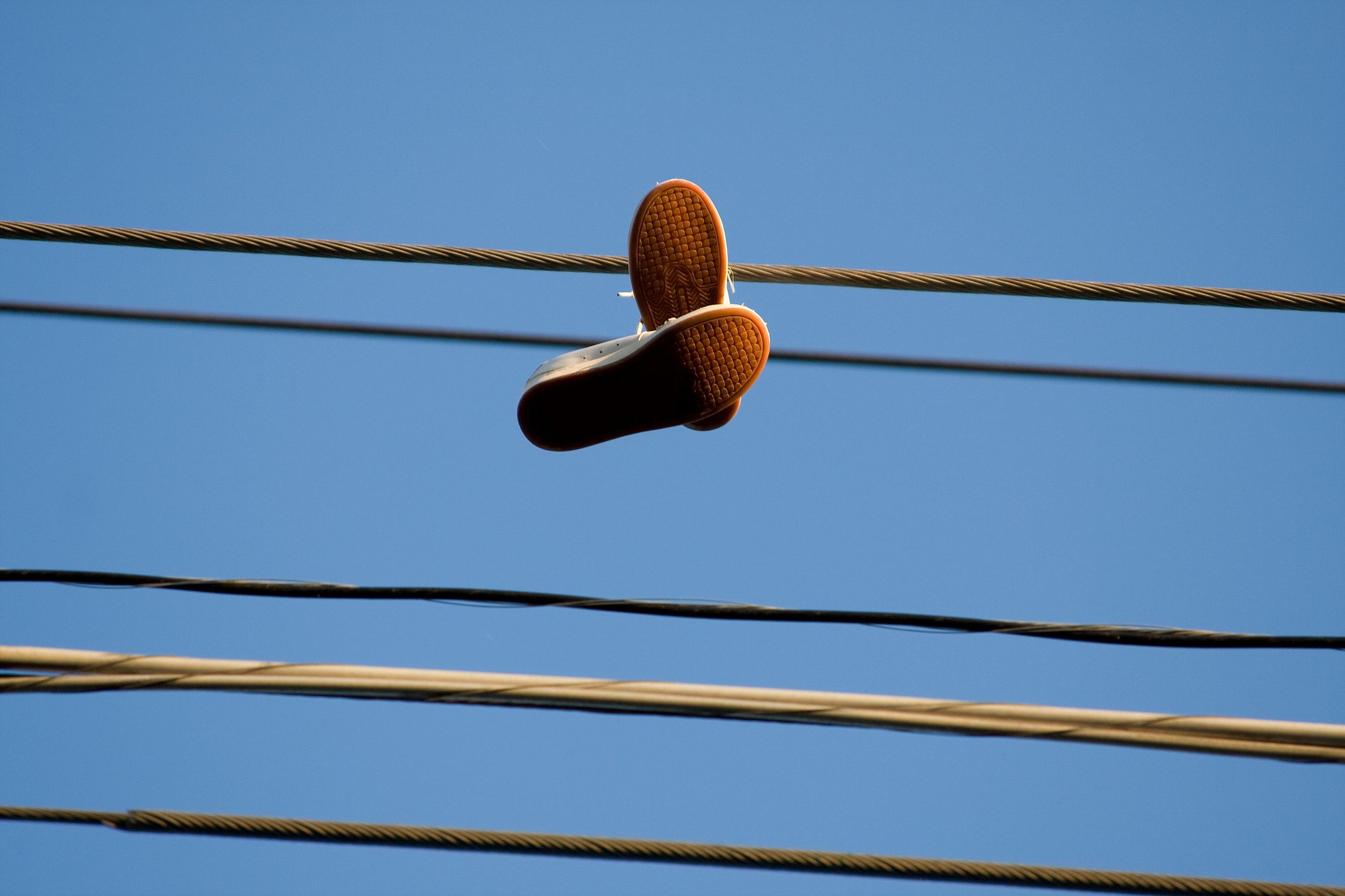The Importance of Baby Boots for Early Development
When it comes to your baby’s growth and mobility, baby boots play a crucial role in their early development. While newborns don’t require footwear for the first few months, as they begin to crawl, walk, or explore their environment, baby boots become essential for protecting their delicate feet. These specialized shoes are designed to provide support, comfort, and flexibility, which are vital for toddlers learning to take their first steps. Unlike regular shoes, baby boots prioritize soft materials, breathable linings, and adjustable closures to accommodate rapid foot growth and ensure a snug yet comfortable fit.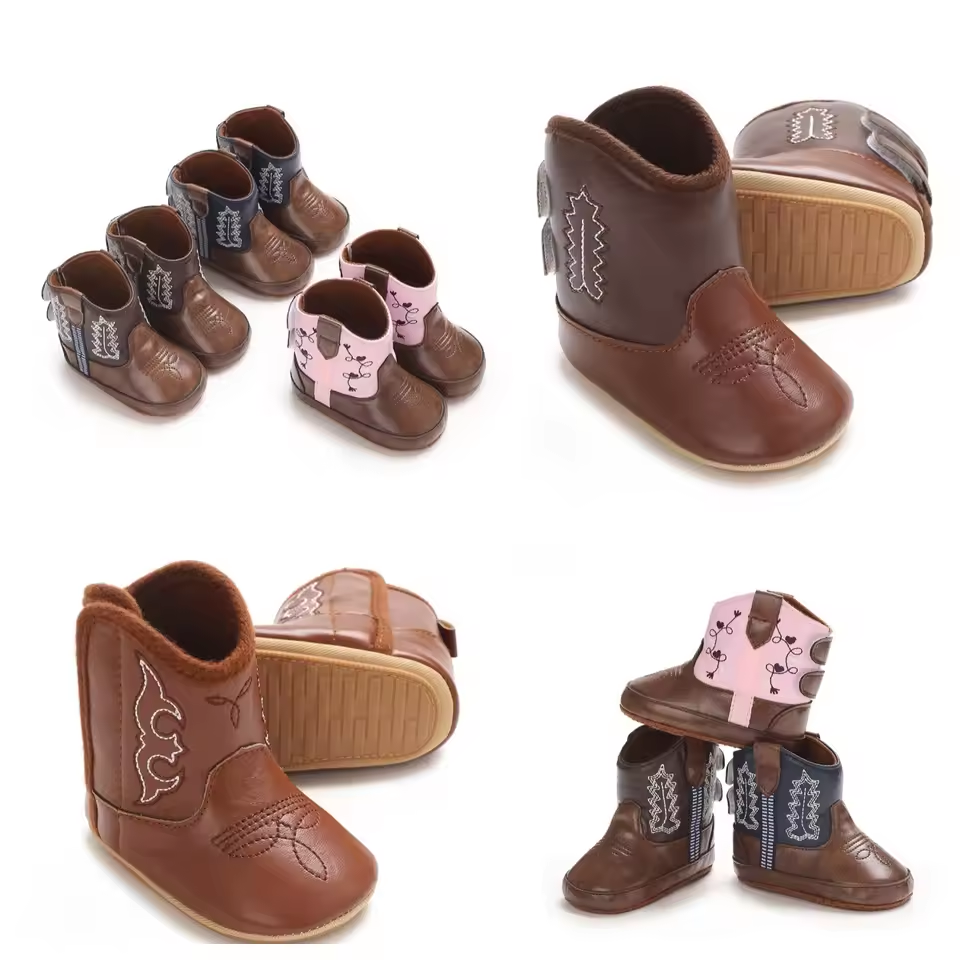
Parents often underestimate the importance of choosing the right boots, but investing in high-quality footwear can prevent issues like blisters, pressure sores, or misaligned gait patterns. For instance, baby boots with a flexible sole allow natural foot movement, which is critical for developing muscle strength and balance. Additionally, the right pair can shield your little one’s feet from cold floors, sharp objects, or uneven surfaces during playtime. Whether your baby is just starting to walk or already exploring their surroundings, baby boots are more than just a fashion accessory—they’re a foundational tool for healthy development.
Key Features to Look for in Baby Boots
When choosing baby boots, prioritize features that ensure comfort, safety, and adaptability to your child’s developmental needs.
- Breathability: Babies’ feet sweat easily, so opt for leather or knit materials that allow airflow. Breathable linings prevent overheating and reduce the risk of fungal infections.
- Flexibility: A rigid sole can hinder natural foot movement. Look for flexible, lightweight soles that mimic barefoot walking while providing cushioning. This supports healthy muscle and bone development.
- Adjustable Closures: Babies’ feet grow quickly, so Velcro, elastic straps, or elasticized cuffs are essential. These closures ensure a snug fit and adapt to size changes.
- Water Resistance: For outdoor use, choose waterproof or water-resistant boots to keep feet dry during rain or messy playdates. Pair with breathable linings to avoid trapping moisture.
- Lightweight Design: Heavy boots strain developing muscles. Prioritize lightweight materials like microfiber or thin rubber soles to encourage free movement.
- Non-Slip Tread: Toddlers learning to walk need deep-grooved, rubberized soles for traction on smooth surfaces. Avoid smooth soles to prevent slips.
- Comfort Padding: Soft insoles or memory foam linings reduce pressure points and provide all-day comfort.
- Easy Maintenance: Look for removable insoles or machine-washable materials for easy cleaning. Durable fabrics like leather or TPU extend the boots’ lifespan.
By focusing on these features, you ensure your baby’s boots support their growth, protect their feet, and remain practical for daily use. Always test fit and adjust closures for a secure, comfortable wear.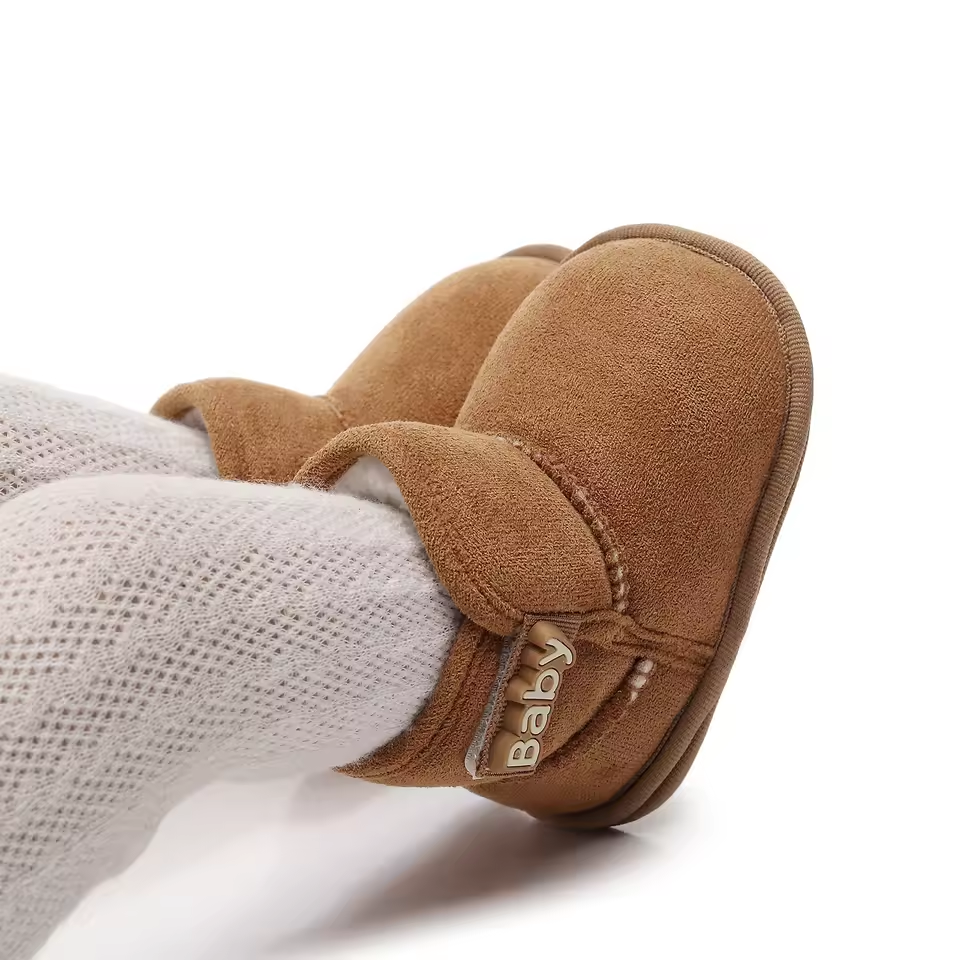
Popular Baby Boot Styles for Different Ages
Choosing the right baby boots depends on your child’s developmental stage, ensuring both comfort and support as they grow. For newborns (0–6 months), soft knitted booties are ideal. These lightweight, breathable styles with elastic cuffs protect tiny feet while allowing natural movement, perfect for indoor use or sleep.
By 6–9 months, babies begin crawling, so crawling shoes with non-slip soles become essential. Look for baby boots made of flexible materials like microfiber or leather to provide traction on smooth surfaces without restricting foot flexibility.
For toddlers taking their first steps (12–18 months), walker shoes or first walking boots are recommended. These baby boots feature a slightly rigid sole for arch support and secure closures like Velcro to prevent slippage. Baby Ugg boots are a popular choice here, blending warmth with a playful aesthetic.
By 18–24 months, toddlers transition to toddler shoes with sturdier soles and durable materials to handle active play. Open-toe sandals or baby boots with breathable mesh panels are great for warm weather, while insulated styles keep feet warm in winter. Always prioritize flexibility and lightweight design to encourage natural gait development.
Seasonal variations also influence choices: ugg-style baby boots are perfect for cold climates, while lightweight sandals suit summer. By aligning baby boot styles with your child’s age and activity level, you ensure optimal comfort and support for every stage of growth.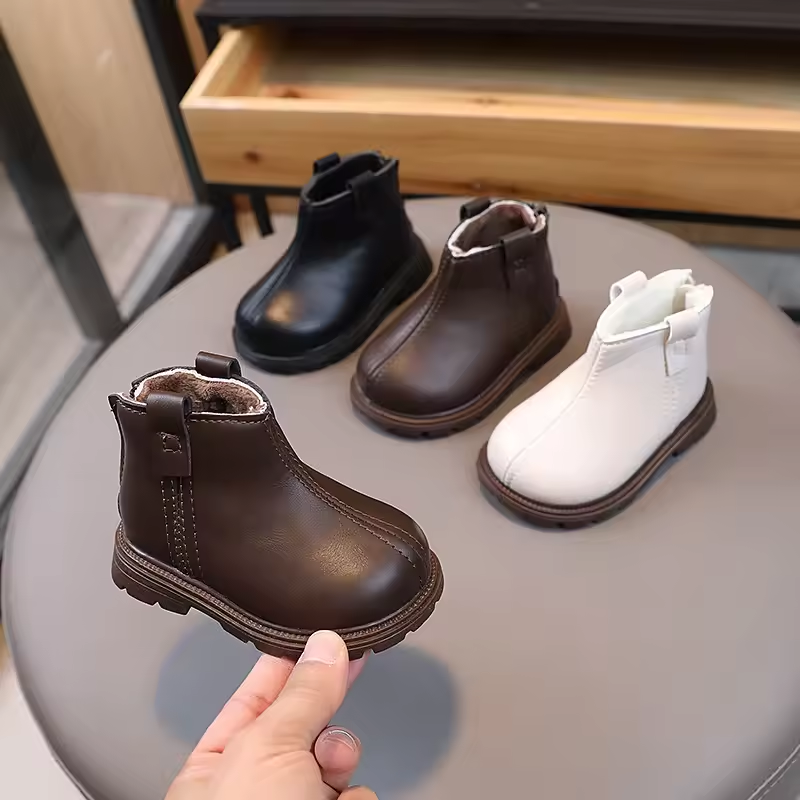
How to Measure Your Baby’s Feet for the Perfect Fit
Measuring your baby’s feet accurately is the first step to finding the right boots. Babies’ feet grow quickly, so even a small miscalculation can lead to discomfort or restricted movement. To measure, place your baby’s foot on a flat surface and trace around it with a marker. Then, measure the length from the heel to the longest toe and the width at the widest part. Compare these measurements to a baby boot size chart provided by the manufacturer.
It’s also important to account for toe room. Your baby’s toes should have about half an inch of space to wiggle freely, as cramped baby boots can cause blisters or deformities. Additionally, check the arch support by pressing gently on the sole of the foot. If the baby boot compresses easily, it may not provide sufficient structure for growing feet. Always try on baby boots in-store if possible, or look for brands offering free returns to ensure a proper fit.
Seasonal Considerations for Baby Boots
Seasonal changes significantly impact the choice of baby boots. During winter, insulated boots or ugg-style baby boots are essential for keeping tiny toes warm. Look for options with thermal linings and waterproof exteriors to protect against snow and slush. In contrast, summer calls for breathable baby boots made from mesh or leather to prevent overheating. Open-toe sandals or flip-flops with non-slip soles are also popular for hot weather, though they should still provide adequate arch support.
For transitional seasons like spring and fall, lightweight waterproof boots are a versatile choice. These baby boots balance warmth and breathability, making them suitable for unpredictable weather. Additionally, consider the type of activities your baby engages in. For example, outdoor play might require traction soles, while indoor use could prioritize soft, plush materials. By adapting baby boots to seasonal needs, you ensure your child stays comfortable and protected year-round.
Top Brands Offering High-Quality Baby Boots
Several reputable brands specialize in baby boots that combine safety, comfort, and style. Stride Rite is a well-known name in children’s footwear, offering baby boots with orthopedic support for growing feet. Their designs prioritize breathability and flexibility, making them ideal for toddlers learning to walk. Another popular brand is baby Ugg boots, which provides cozy, insulated options perfect for colder climates. Their sheepskin-lined boots are not only warm but also hypoallergenic, reducing the risk of irritation.
For eco-conscious parents, Birkenstock offers baby boots made from sustainable materials like natural latex and organic cotton. These baby boots are known for their contoured footbeds, which promote healthy foot development. Skechers and Adidas also produce baby boots with memory foam insoles and flexible soles, ensuring maximum comfort during active play. Lastly, Carhartt provides durable, rugged baby boots suitable for adventurous toddlers who love outdoor exploration. By choosing a trusted brand, you can rest assured that your baby’s baby boots meet high-quality standards.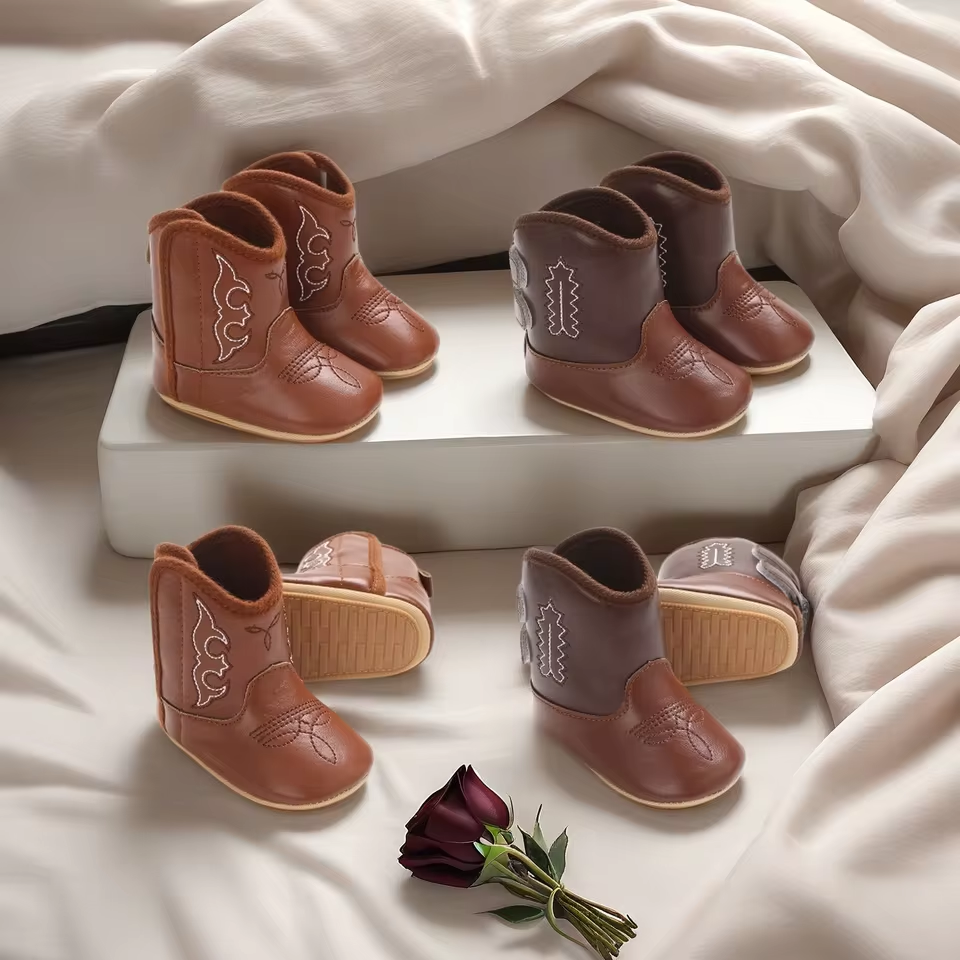
Safety Standards to Prioritize When Buying Baby Boots
When purchasing baby boots, safety should be the top priority to protect your child’s delicate feet and support healthy development.
- Certifications: Look for ASTM (American Society for Testing and Materials) or CE (Conformité Européenne) certifications. These standards ensure the baby boots meet rigorous safety requirements, including non-toxic materials and durability.
- Non-Toxic Materials: Avoid baby boots with harmful chemicals like phthalates or formaldehyde. Opt for natural leather, organic cotton, or BPA-free synthetic materials to prevent skin irritation or allergic reactions.
- Non-Slip Tread: Toddlers learning to walk need deep-grooved, rubberized soles for traction on smooth surfaces. Smooth soles increase the risk of slips and falls, especially on tile or hardwood floors.
- Secure Closures: Velcro, elastic straps, or adjustable cuffs ensure a snug fit without being too tight. Avoid laces or buckles that can cause discomfort or loosen during active play.
- Lightweight Design: Heavy baby boots strain developing muscles. Choose lightweight materials (e.g., microfiber or thin rubber soles) to reduce fatigue and encourage natural movement.
- Arch Support: For toddlers, baby boots with contoured soles or memory foam insoles provide gentle arch support, promoting proper gait development.
- Ventilation: Breathable materials like leather or mesh panels prevent overheating and reduce the risk of fungal infections. Avoid fully waterproof boots unless paired with breathable linings.
- Durability: High-quality baby boots resist tearing or fraying. Check for reinforced stitching and sturdy soles to ensure they withstand frequent use.
By prioritizing these safety standards, you ensure your baby boots protect your child’s feet, support their growth, and meet essential quality benchmarks. Always test the fit and inspect the shoes for potential hazards before purchase.
Conclusion: Invest in Comfort and Growth with the Right Baby Boots
In conclusion, baby boots are far more than a fashion statement—they’re a critical component of your child’s early development. By prioritizing comfort, safety, and functionality, you can ensure your little one’s feet remain protected while they explore the world. From choosing the right materials and styles to measuring for the perfect fit, every decision contributes to healthy foot growth and mobility.
